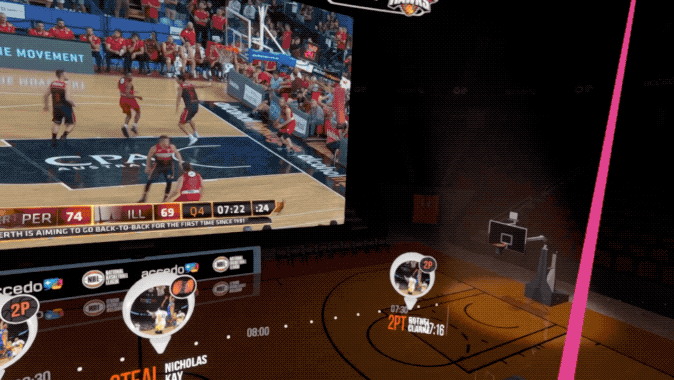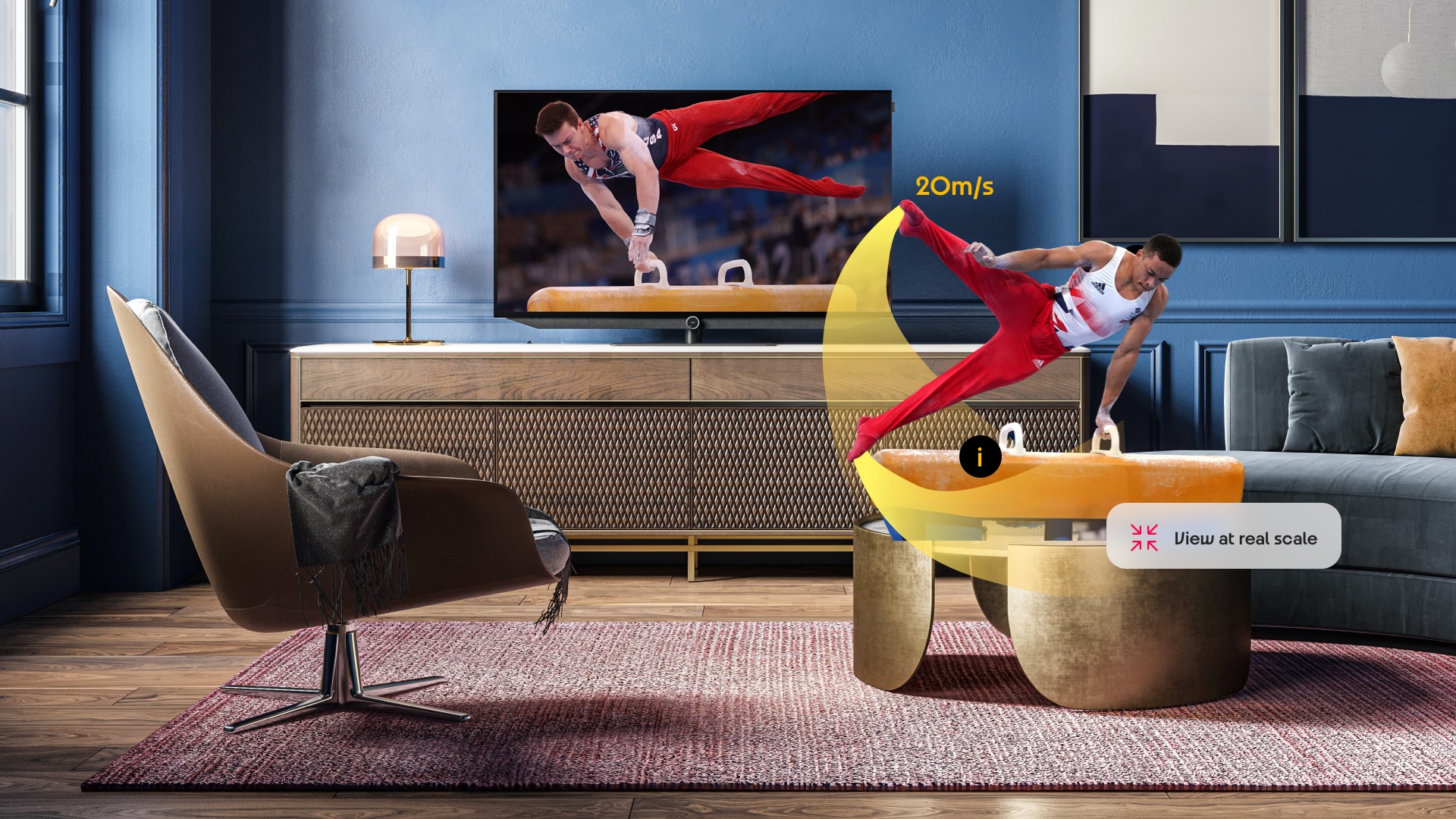Op-Ed: Sports Content Creators Poised for Metaverse Success
Story Highlights
The metaverse is currently like the Wild West: many companies are trying to monetize it, but the best way to do that is not yet known. Meta, Nreal, Niantic, and soon Apple will empower users to jump between realities and discover a new way to interact with their favorite entertainment. Sports organizations are in a perfect position to reap the rewards from this modern-day gold rush, and there is every chance that they can do it without the need for big investment.
Sports organizations are well positioned to make the most of the metaverse opportunity because they are already producing all that’s needed to create a compelling, immersive experience. Added to that, sports fans make up the perfect audience for this type of interactive content, and there are multiple monetization opportunities that only sports organizations can leverage.
Sport already has the right ingredients, like multiple cameras as traditional 2D video can be complemented by having other camera angles, recent highlights, or other games playing around the screen. It is one of the main advantages of having access to all the extended space presented by AR and VR. Sports fans could personalize their set-up to follow their favorite sports. One example of this is the immersive application that Accedo created for the National Basketball League in Australia, which allowed fans to review autogenerated highlights in a floating “second screen,” all without losing track of the action in the main game.
All sports produce a huge number of statistics, but raw data doesn’t offer any true value to the fans. It needs to be put into context and highlighted in a way that gives
just the right amount of information at the right moment. Immersive platforms have the
space to place the data and interactivity tools to browse and filter all the available information. In practice, this could work with team sports, by placing a mini pitch in front of
the main video screen displaying teams or players. Fans would then be able to select those teams or players that they want information to be shown about.
Similarly, race sports can display a map of the course and add all the information about the participants, the location of the extra cameras, features of the course, and more. Each sport will require that we imagine different interactive experiences. Fans will begin to wonder how they ever watched sports before, without such a high-level immersion and interaction.
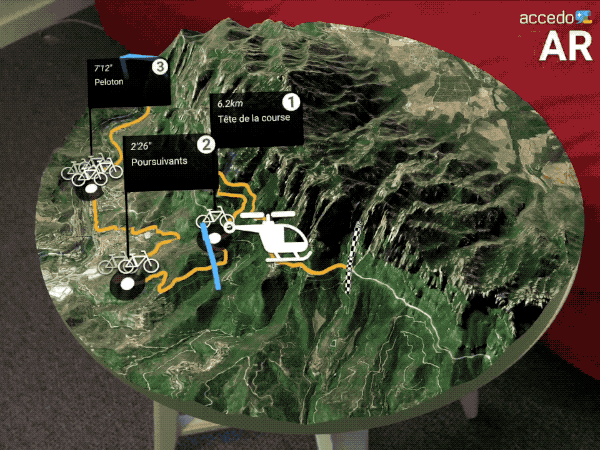
Showing an augmented reality map during a cyclist event not only looks great but it’s very useful to follow the race. Source: Accedo
Each sport also has its own unique objects and environments, and connecting with those can improve the understanding of, and bring fans closer to, the tournaments or games. Imagine an interactive real size 3D Formula 1 car that explains in detail what each part is for, and how they have been designed by different teams. Or in sports such as tennis, showing different types of surfaces to simulate the physics involved and how the bounce is affected by the ball's spin or humidity. 3D models and basic interaction are not as complicated and pricey as one might imagine. We can efficiently reuse existing tools and frameworks from the video game industry. These interactive experiences in AR & VR will not only benefit die-hard sports fans but will also be leveraged to help newbies understand and develop a love for the sport.
One step further is immersive video. Sports events were traditionally enjoyed only by the in-person crowd present at the stadium or venue. Everyone else had to wait to get the result printed in the newspaper the following day. The introduction of telegraph and radio enabled “live” experiences, but it wasn’t until the first televised broadcasts in the 1930s that fans could actually see the events themselves. 80 years later, we are still stuck with the same technology. Yes, the resolution is better and there are more cameras, but we still watch flat images on a rectangle screen. Immersive video has the potential to let fans anywhere in the world enjoy the in-stadium experience. With the VR headsets getting high-quality displays, there is no technological barrier to producing high-quality stereoscopic VR video. This, combined with spatial audio, will make people feel like they are cheering at the actual in-person event. New technology, such as the haptic vest, could even mean that fans feel the vibrations of the stadium!
Further down the line we’ll likely start to see more of a second type of immersive experiences; volumetric video, also known as holograms. Olympic sports like gymnastics could be watched as a holographic version on top of the viewer’s coffee table. For team sports like football, volumetric broadcasting can place the viewer at any physical point within the stadium, including inside the pitch. Imagine watching the game sitting on the crossbar, flying above like on a virtual spy cam, or at player height following your favorite player. The potential is so immense that we can barely imagine how this technology will be applied in the future.
Fans want more content from their favorite teams and athletes as sports audiences are not just video consumers, they are fans. They are eager to engage with their favorite teams and athletes in every possible way. Currently, social media allows fans to enjoy training sessions’ goals, follow players during their trips, and visit the changing room during post-match celebrations. AR and VR will surpass this passive experience by turning fans into first-person participants, they will not only experience matches but also be able to interact with their favorite team.
Down the line, sports brands will transition from providing apps to hosting virtual places. Premier League fans in South-East Asia won’t need to travel halfway across the world to visit their favorite team’s home stadium. Similar experiences have existed for a while, like this one from Real Madrid, however, fans are not likely to start regularly using them until the experiences are consumed in the newer VR generation headsets.
The experience of a virtual visit on mobile is unimpressive, to say the least. Besides, we can’t stop by just giving a virtual tour, fans will need a place to engage with other fans, play branded games, and watch video. This is exactly what FIFA has been working on with its Roblox virtual world for the Qatar World Cup.
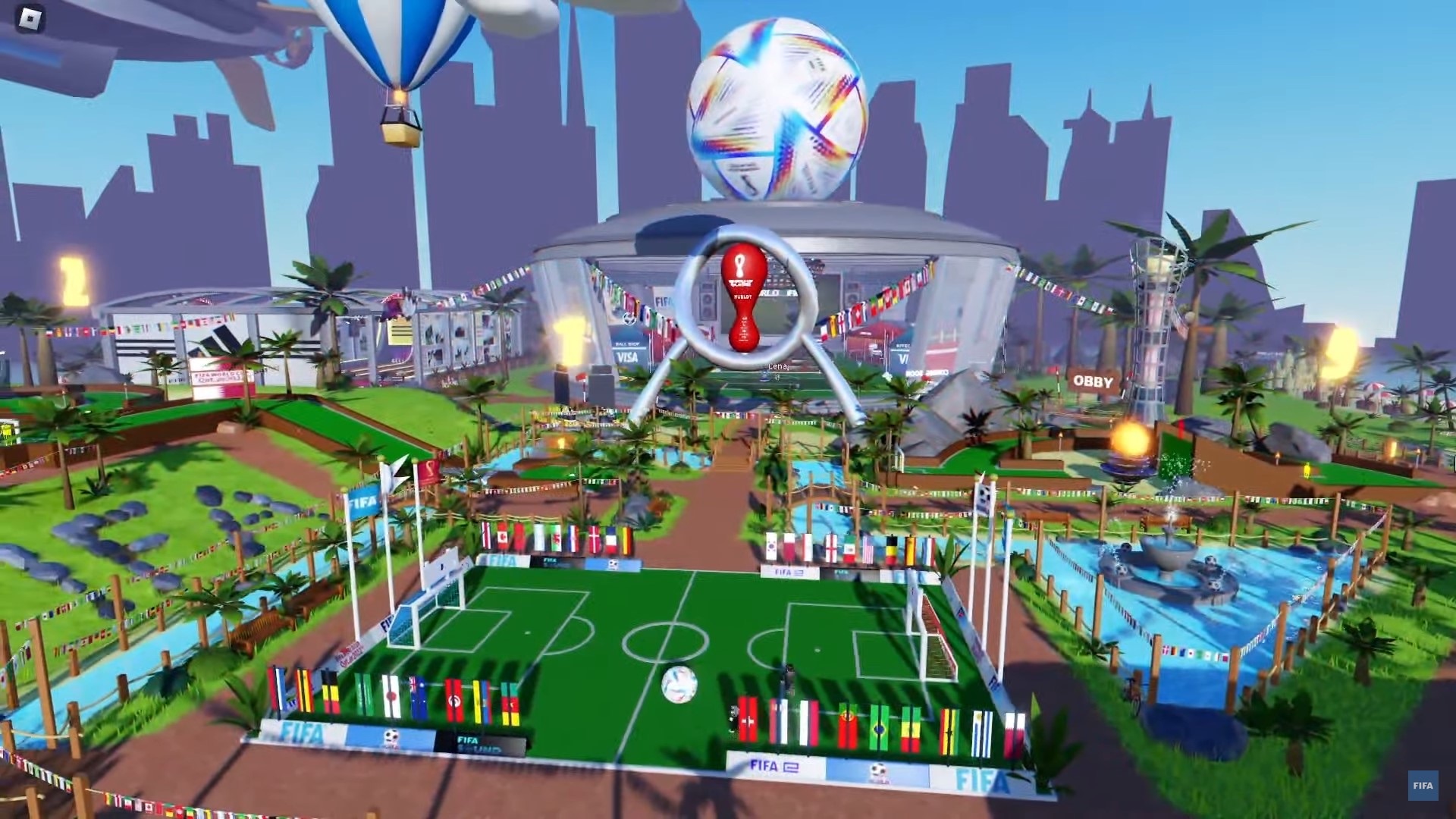
FIFA has created a virtual world with games, videos, and interactive experiences around the World Cup inside Roblox. Source: FIFA & Roblox
Traditional monetization strategies, such as subscription, are based on a high number of users and might not work on incipient platforms. Sports organizations have the advantage of working closely with sponsors that will be excited to create meaningful two-way interactions with fans in the metaverse. Sports organizations should focus on bringing as many fans as possible to their platforms, leveraging the incentives provided by experiencing sports in the metaverse. Once the numbers grow, this audience will have value for their sponsors and other brands related to the sport. Sponsors have lost ground since the pandemic and are looking for new ways to engage with fans in a more meaningful way. 3D sporting experiences can also be a way of integrating the fan with the sponsor, so it is not just a logo but part of the storytelling of the experience.
Immersive video will open a huge opportunity to monetize premium events through PPV (Pay-per-View). Well-placed real or virtual cameras, as the ones described before, might even be sold at a higher price. Sports owners and broadcasters then have a meaningful way to compete with piracy by providing a unique experience only available through their immersive application.
Merchandise is a traditional way to monetize a club and can have a new lift in the metaverse. First, showcasing real items as 3D models will allow fans to customize, evaluate and purchase from a VR or AR headset. Fans could check how a poster would look on their wall or see if a pair of glasses would suit them. AR will definitely help brands to showcase their products and sell more.
And what about virtual assets? Although some still find it hard to believe that people will actually pay real money for virtual clothing, there is a brewing market out there. Virtual clothing and accessories are already making millions of dollars. For example, Fortnite reported to have made $50 million from just one set of NFL avatar skins that sold at $15 a piece. Other companies like the Swiss CollectID.io are blending the limits between virtual and real goods by attaching digital IDs to sports jerseys and memorabilia, allowing customers to own them in the real world as well as in the metaverse. It comes as no surprise that it is the younger generations that are the prime consumers of virtual clothing and accessories. And let’s not forget that it is this generation that will become tomorrow’s main consumers.
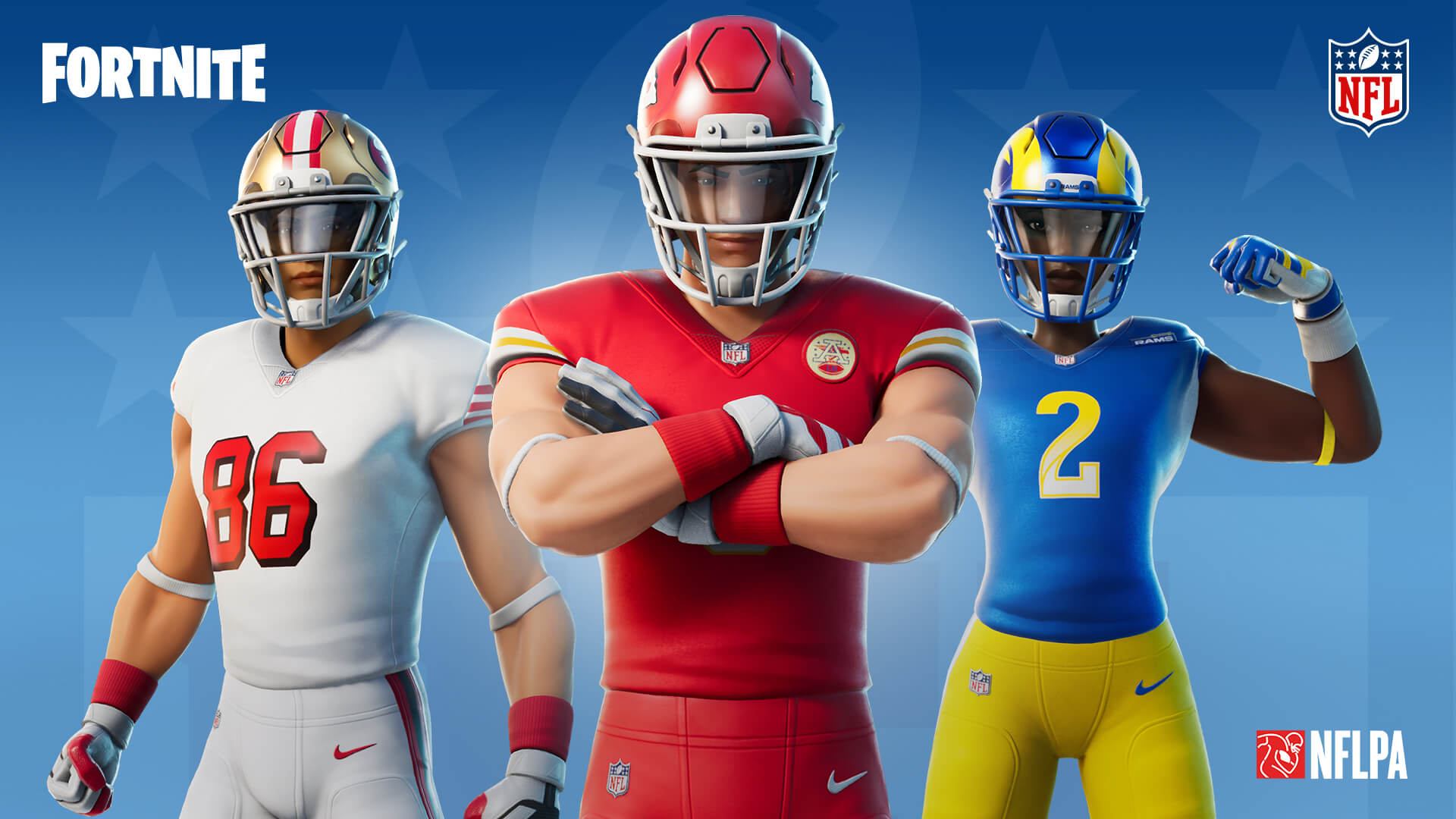
Believe it or not, these virtual skins were sold $15 apiece and made $50 million in revenue.
Source: NFL; Fortnite
Metaverse technologies have the potential to revolutionize sports engagement and raise it to another dimension. Fans will have access to a myriad of ways to engage and interact with their favorite teams and athletes. Traditional monetization channels will grow several-fold. Instead of
stadium tickets, they’ll sell virtual tickets; instead of a jersey, they’ll have dozens of virtual
collections; video rights won’t be just for traditional broadcast, but for holograms and 360
videos, and sponsors won’t be any more just a logo at the end of a website.
Why wait?
